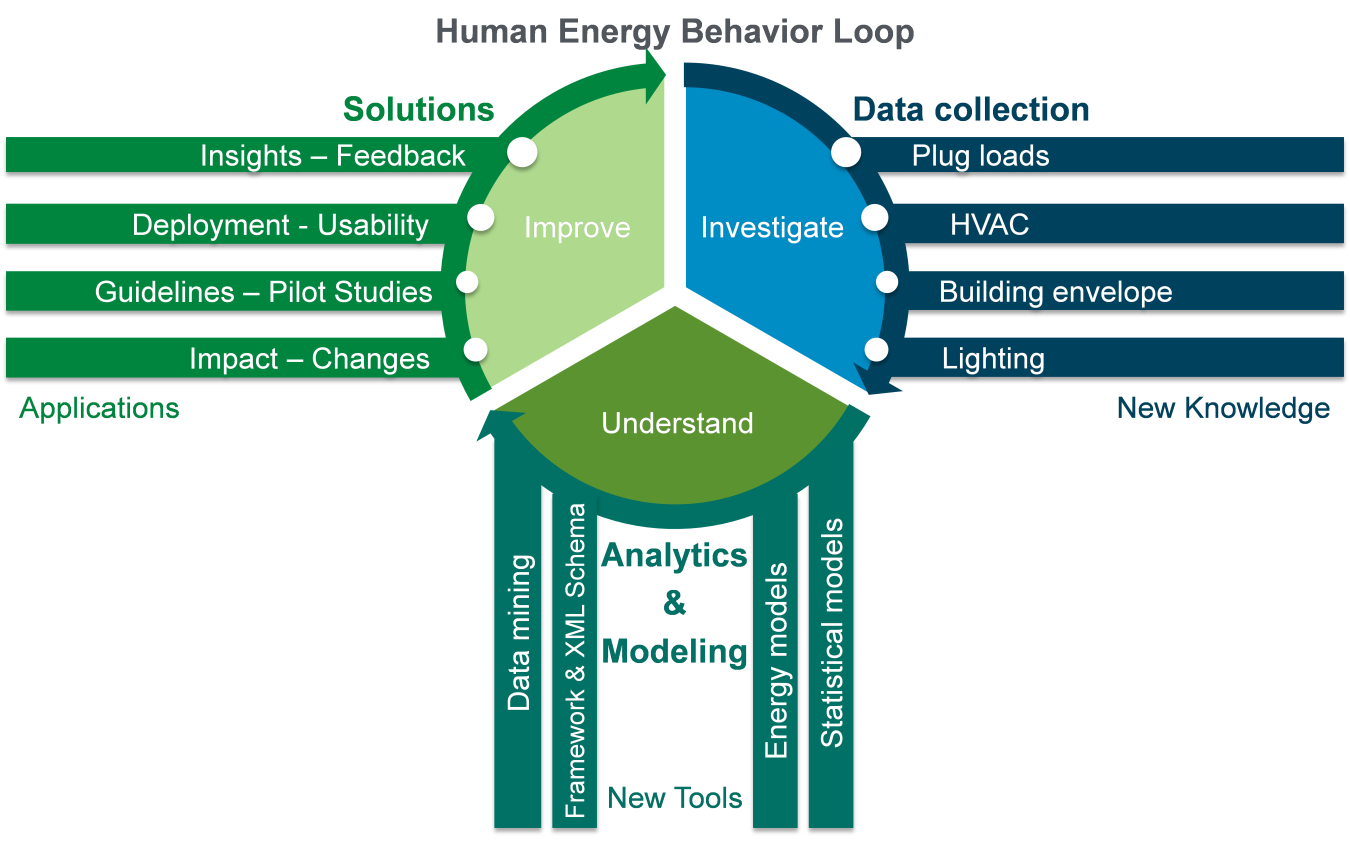
Steps of the technical approach to the human energy behavior loop: Investigate the operations of building energy and services systems through behavior-related data, understand the human behavior through analytics, and improve the building performance.
Lead Performer: Lawrence Berkeley National Lab - Berkeley, CA
Partners:
-- Bentley Systems - Gaithersburg, MD
-- C3 Energy - Redwood City, CA
-- Tsinghua University - Beijing, China
-- Center of Building Standards - China
-- Center for Energy Efficiency in Buildings, Ministry of Housing and Urban Development - China
DOE Funding: $600,000
Cost Share: $850,000
Project Term: January 2013 - September 2015
Project Objective
The U.S.-China Clean Energy Research Center (CERC) is a pioneering consortium bringing together governments, key policymakers, researchers, and industry to develop a long-term platform for sustainable U.S.-China joint research and development.
The primary goal of this project is to gain a deep understanding of energy-related occupant behavior in buildings. Technologies alone do not guarantee low energy use in buildings; human behavior also plays an essential role in building design and operation. However, case studies and data are needed to understand human behavior’s role in energy efficiency. This project aims to create that data, to standardize the description of human energy-related behavior, and then to integrate those behavior models into whole-building performance simulation tools.
This project makes significant technical contribution to International Energy Agency (IEA) Annex 66: “Definition and Simulation of Occupant Behavior in Buildings” under the Energy in Buildings and Communities (EBC) Programme.
Project Impact
LBNL estimates that understanding, and subsequently correcting, overcoming, or optimizing occupant behavior—or alternatively designing buildings and operation schemes that better align with occupant behavior—can reduce building energy use by 5% to 50%. The developed behavior tools can be used by energy modelers, building designers, engineers, operators, and policy makers.
Related Publications
- S. D’Oca, T. Hong. A data-mining approach to discover patterns of window opening and closing behavior in offices. Submitted to Building and Environment, 2014.
- S. D’Oca, T. Hong. Occupancy schedules learning process through a data mining framework. Submitted to Energy and Buildings, 2014.
- X. Zhou, D. Yan, T. Hong, X. Ren. Data analysis and stochastic modeling of lighting energy use in large office buildings in China. Accepted, Energy and Buildings, 2014.
- C. Li, T. Hong, D. Yan. An insight into actual energy use and its drivers in high-performance buildings, Applied Energy, 2014, 131:394-410.
- K. Sun, D. Yan, T. Hong, S. Guo. Stochastic Modeling of Overtime Occupancy and Its Application in Building Energy Simulation and Calibration, Building and Environment, 2014, 79:1-12.
- W.K. Chang and T. Hong. Statistical Analysis and Modeling of Occupancy Patterns in Open-Plan Offices using Measured Lighting-Switch Data, Journal of Building Simulation, 2013.
- W. Turner, T. Hong. A technical framework to describe occupant behavior in buildings, 2013 BECC (Behavior Energy and Climate Change) Conference, Sacramento.
- H.W. Lin, T. Hong. Occupant Behavior: Impact on Energy Use of Private Offices, 2012 ASim Conference, Shanghai.
- T. Hong et al. Building performance simulation. LBNL Report-6418E, 2013.
Contacts
DOE Technology Manager: Amir Roth
Lead Performer: Tianzhen Hong, Lawrence Berkeley National Laboratory

